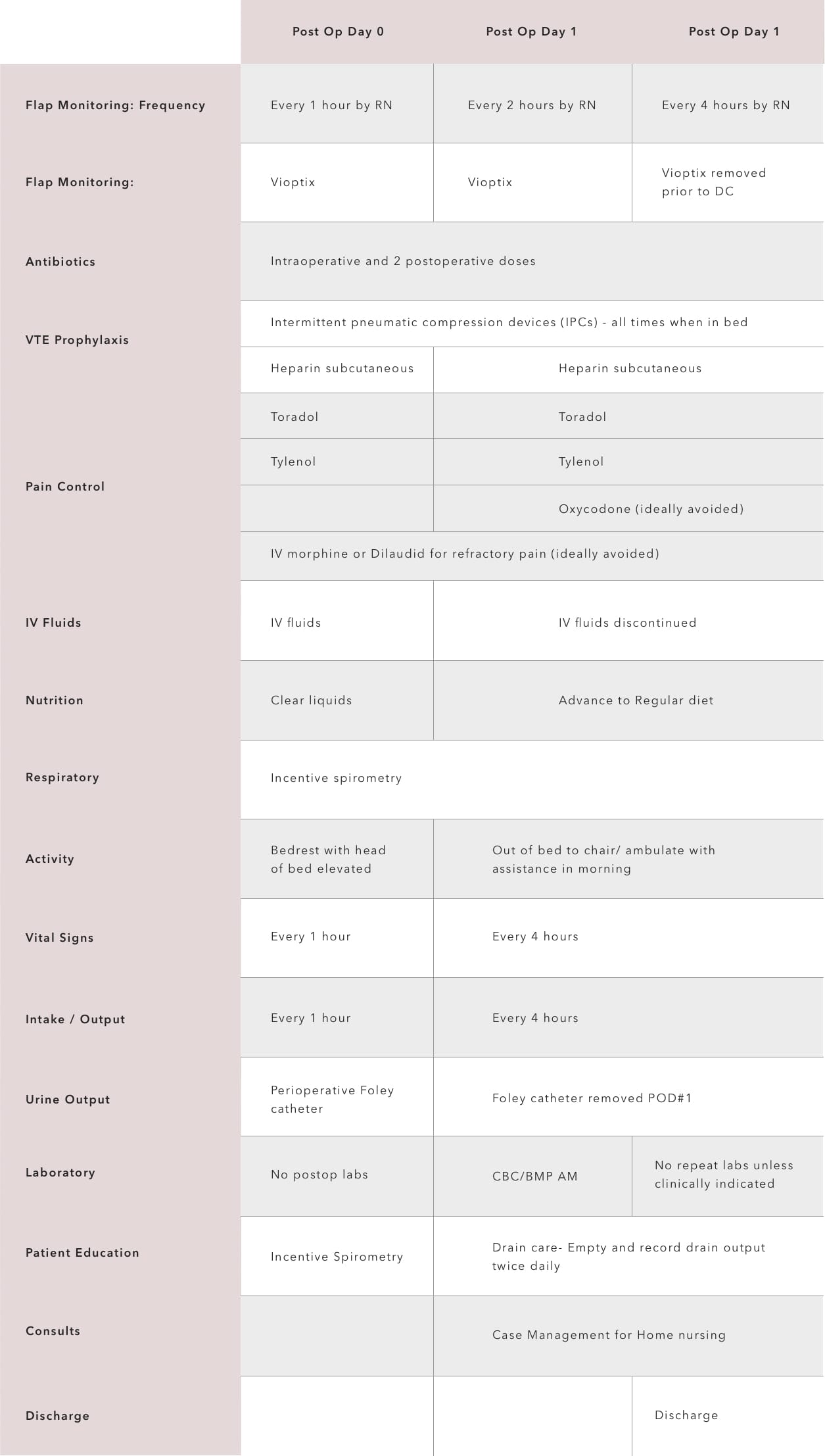An Enhanced Recovery After Surgery (ERAS) Protocol is a set of guidelines that serve to minimize recovery time and eliminate pain for surgical patients.
The steps in the ERAS protocol for breast reconstruction can be considered in three parts:
- Before Surgery (Preoperative)
- During Surgery (Intraoperative)
- After Surgery (Postoperative)
The preoperative guidelines require that Dr. Tanna thoroughly review the operative procedure and risks of the surgery with you. For some patients, a preoperative lifestyle change may be recommended to minimize the risk of surgery, particularly for patients who smoke, have a high body mass index (BMI), or those with diabetes. Before the surgery, Dr. Tanna will also review the key components of postsurgical care, including a comprehensive overview of what to expect after surgery. Finally, patients undergoing a flap-based reconstruction may require a special MRI scan to visualize the anatomy and blood vessels necessary for the surgery.
Immediately prior to and during the surgery, Dr. Tanna will also administer medications that will help combat postoperative nausea, vomiting, constipation, pain, and infection. To specifically reduce postsurgical pain and eliminate use of narcotic pain medications, Dr. Tanna will perform various nerve blocks by injecting long-acting numbing medication.
After surgery, patients are closely monitored and provided opioid-free pain management. Once assessed for safety, the patient will be encouraged to eat and move within 24 hours of surgery to help promote enhanced recovery.






